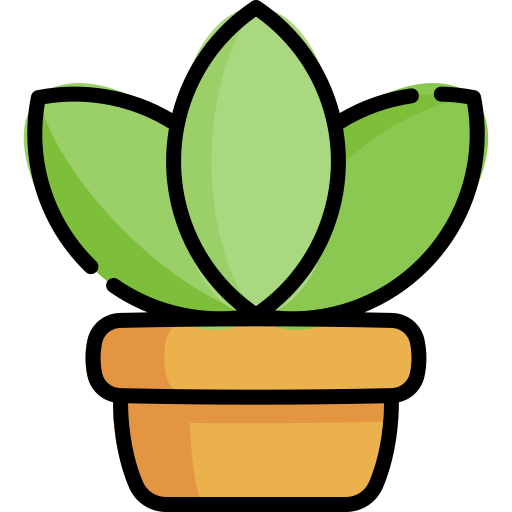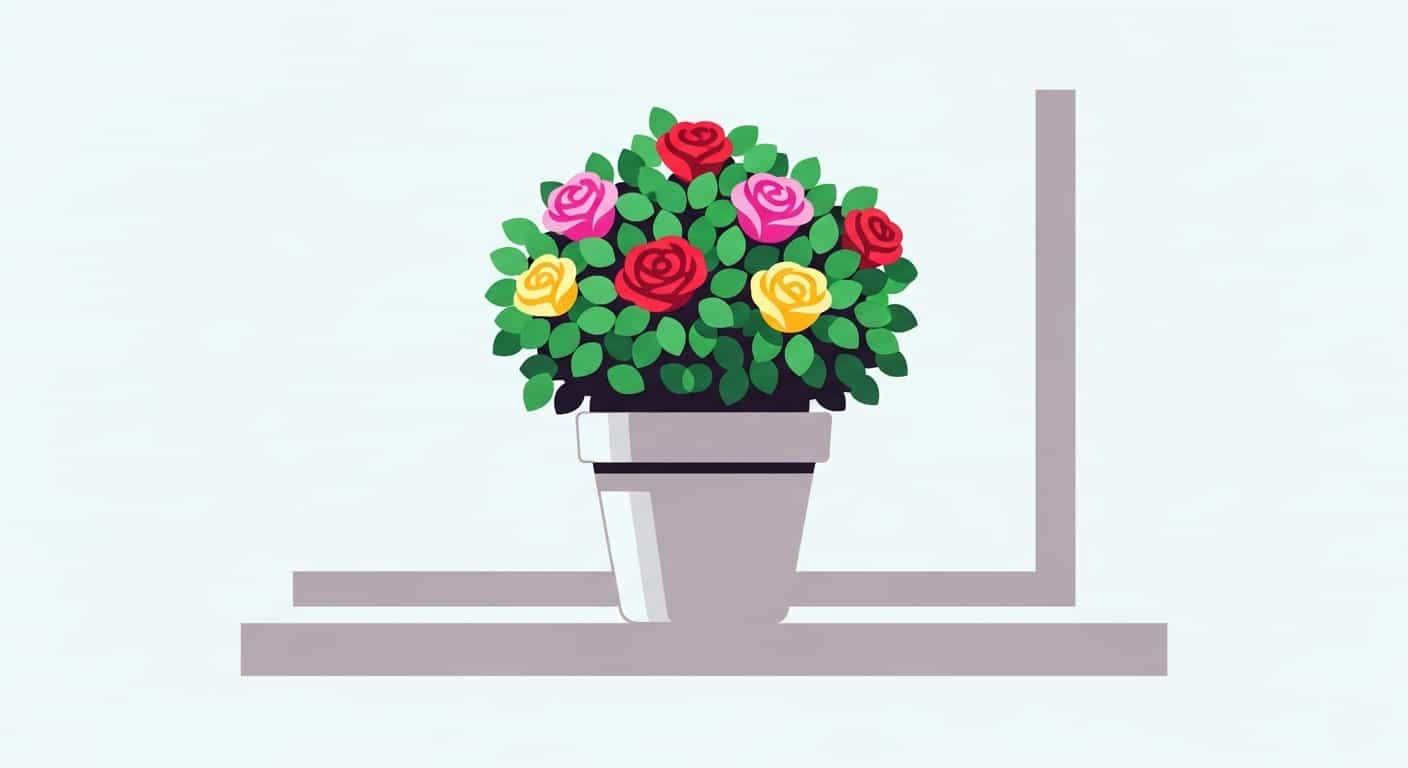Starting your indoor rose journey begins with a single, crucial decision: choosing the right plant. While you might be tempted to grab the first beautiful rose you see, success in indoor gardening hinges on selecting a variety that is naturally suited for life in a container. Not all roses are created equal, and bringing a sprawling garden giant into your living room is a recipe for frustration. This guide will walk you through everything you need to know about selecting the perfect rose partner for your indoor conservatory.
Understanding which roses thrive in pots is the foundation of a rewarding experience. We will explore the best categories of roses for indoor life, from the tiny and charming miniatures to the prolific polyanthas. You’ll learn what to look for when you’re at the nursery to ensure you bring home a healthy, vibrant plant ready to flourish. With the right choice, you can set yourself up for a home filled with stunning, fragrant blooms year-round.
Why Variety is the Key to Indoor Success
In an outdoor garden, a rose has ample room to stretch its roots deep into the earth and its branches towards the sky. Space and resources are abundant. Indoors, the environment is finite. The pot dictates the size of the root system, and your home’s dimensions limit the plant’s upward growth. This is why the genetic makeup and natural growth habit of a rose variety are so important.
Choosing a rose bred for compactness is the single most important factor for long-term success. Large varieties such as Hybrid Teas, Grandifloras, or Climbing Roses are programmed to grow into massive bushes, sometimes reaching over six feet tall and wide. Confining them to a pot is like trying to keep a Great Dane in a small apartment—it’s stressful for the plant and unmanageable for the owner. These vigorous growers will quickly become root-bound, their growth will stall, and they will constantly struggle against their container’s limitations, resulting in a stressed, unhappy plant that refuses to bloom.
Conversely, compact varieties are genetically predisposed to stay small. They feel perfectly at home in a container, as it provides an environment that matches their natural size. They can develop a healthy root system within the pot’s confines and will dedicate their energy to producing lush foliage and, most importantly, abundant flowers, rather than fighting for more space. By starting with a suitable variety, you are working with the plant’s nature, not against it.
The Best Rose Varieties for Your Indoor Garden
Fortunately, rose breeders have developed many stunning varieties that are perfectly content to live in containers. These categories are your go-to choices when shopping for an indoor rose.
Miniature Roses: The Uncontested Champions
As their name implies, miniature roses are the stars of the indoor gardening world. These are not just small rose bushes; they are genetically distinct varieties bred over decades for their petite size, prolific blooming, and adaptability to pot culture.
- Size and Habit: Miniature roses typically grow between 6 and 18 inches in height, with some “micro-mini” varieties staying even smaller. They form dense, bushy plants with perfectly proportioned tiny leaves, thorns, and, of course, flowers. Their blooms are often just 1-2 inches across but mirror the classic, elegant form of their larger cousins.
- Blooming Power: One of the greatest appeals of miniature roses is their incredible willingness to bloom. They are repeat bloomers, meaning they flower in cycles throughout the growing season. With proper indoor care, including adequate light and fertilizer, you can have them in bloom almost continuously.
- Variety and Color: The world of miniature roses is vast. You can find them in nearly every color imaginable, from classic reds and pinks to vibrant yellows, oranges, and even unique lavenders and striped patterns. This diversity allows you to curate a collection that perfectly matches your home’s color palette.
- Recommended Varieties: When shopping, look for named varieties, as they often have proven track records for health and performance. Some popular and reliable choices include:
- ‘Gourmet Popcorn’: A beloved variety that is covered in clusters of small, bright white flowers that resemble, you guessed it, popcorn. It’s exceptionally disease-resistant and a vigorous bloomer.
- ‘Sunblaze’ Series: This is a collection of miniature roses available in a rainbow of colors, including Red Sunblaze, Amber Sunblaze, and Rainbow Sunblaze. They are known for their compact growth and vibrant, long-lasting flowers.
- ‘Cinderella’: A charming micro-mini with delicate, pale pink double blooms. It’s perfect for small pots and windowsills.
- ‘Stars and Stripes’: For something truly unique, this variety features eye-catching red and white striped petals.
Polyantha Roses: Clusters of Color
If you want a slightly larger plant with an incredible floral display, Polyantha roses are an outstanding choice. The name “Polyantha” means “many-flowered,” which perfectly describes their defining characteristic: producing large, impressive clusters of small blooms.
- Size and Habit: Polyanthas are typically larger than miniatures but still very manageable for containers, usually staying between 2 and 3 feet tall. They have a naturally bushy, rounded growth habit that makes for an attractive potted specimen.
- Blooming Power: These are workhorse roses, known for being hardy, disease-resistant, and exceptionally floriferous. The flowers appear in large sprays, creating a massive impact of color that can last for weeks. Like miniatures, they are repeat bloomers.
- Flower Form: Polyantha flowers are generally smaller and sometimes less formally shaped than classic roses, but what they lack in individual size, they more than make up for in sheer quantity.
- Recommended Varieties:
- ‘The Fairy’: One of the most popular landscape roses in the world, ‘The Fairy’ is also a superb container plant. It produces huge, cascading sprays of light pink, rosette-shaped flowers and has glossy, disease-resistant leaves.
- ‘Cécile Brünner’: Often called the “Sweetheart Rose,” this variety has small, perfectly formed, light pink buds that open into fragrant, blush-colored flowers. There is a climbing version, so be sure to select the bush form for container growing.
- ‘Marie Pavié’: A beautiful and fragrant choice, ‘Marie Pavié’ offers clusters of creamy-white flowers with a lovely scent. It’s a hardy and reliable bloomer.
Patio & Small Floribunda Roses
The term “patio rose” is more of a marketing category than a strict classification, but it generally refers to compact Floribunda roses that have been bred to stay smaller. Floribundas are known for producing flowers in clusters (like Polyanthas) but with blooms that often have the classic shape of Hybrid Tea roses.
- Size and Habit: These roses bridge the gap between miniatures and full-sized garden roses, typically maturing at around 2 to 3 feet. They require a larger pot than miniatures but reward the extra space with substantial flower production. Always check the plant tag for the mature size before purchasing.
- Blooming Power: As their name suggests (“abundant flowers”), Floribundas are excellent repeat bloomers, providing a steady supply of color throughout the season.
- Flower Form: They offer the best of both worlds: the classic rose flower form and the clustered blooming habit. This makes them incredibly showy in a container.
- Recommended Varieties:
- ‘Angel Face’: A classic and beloved Floribunda known for its stunning lavender blooms and strong citrusy fragrance. It stays relatively compact and is a great candidate for a large indoor pot.
- ‘Sunsprite’: If you’re looking for a vibrant yellow, ‘Sunsprite’ is one of the best. It boasts deep, non-fading yellow flowers with a powerful fragrance and has excellent disease resistance.
- ‘Europeana’: Known for its deep, velvety red flowers that appear in large clusters, ‘Europeana’ is a dramatic and high-performing Floribunda that can adapt well to container life.
How to Select a Healthy Plant at the Nursery
Your success story begins the moment you pick your plant. Choosing a healthy, robust specimen from the start gives you a significant advantage. A stressed or diseased plant will struggle to adapt to its new indoor environment. Here’s what to look for:
- Lush, Green Foliage: The leaves are the plant’s solar panels and a key indicator of health. Look for a plant with vibrant, glossy green leaves. Avoid plants with yellowing leaves (a sign of overwatering or nutrient deficiency), brown or black spots (a sign of fungal disease like black spot), or leaves that are wilting or crispy.
- Check for Pests: Carefully inspect the entire plant. Pay close attention to the undersides of leaves and the junctions where leaves meet the stem. Look for signs of common pests:
- Spider Mites: Fine, silky webbing is a dead giveaway. You may also see tiny moving dots.
- Aphids: Small, soft-bodied insects, often green or black, clustered on new growth and flower buds.
- Whiteflies: Tiny white insects that will fly up in a cloud when the plant is disturbed.
If you see any signs of pests, it’s best to choose a different plant.
- A Well-Formed Structure: Look for a plant with a balanced, bushy shape and multiple healthy canes (stems) emerging from the base. Avoid plants that are lopsided, spindly, or have only one or two weak-looking canes.
- Buds Over Blooms: While it’s tempting to grab the plant with the most open flowers, it’s often smarter to choose one with many healthy-looking buds. This tells you the plant is in an active growth cycle and ready to bloom. You’ll also get to enjoy the entire flowering process from start to finish once you get it home.
- Examine the Roots (If Possible): Gently tip the plant out of its pot to look at the root system. Healthy roots should be firm, plentiful, and whitish-tan in color. Avoid plants with dark, mushy, or smelly roots (a sign of root rot). If the roots are a dense, tangled mass circling the bottom of the pot, the plant is “root-bound.” This isn’t necessarily a deal-breaker, as you can gently tease the roots apart before repotting, but a less root-bound plant will have an easier transition.
- Read the Label: The plant tag is your friend. It provides the variety name, its expected mature size, and sometimes its light requirements and disease resistance. Make sure the expected size is a good fit for your indoor space and the container you plan to use.
By taking a few extra minutes to be a discerning shopper, you can avoid bringing home problems and start your indoor gardening adventure with a rose that is primed for success. Choose wisely, and you’ll be rewarded with a healthy, beautiful companion that will bring you joy for years to come.


Leave a Reply